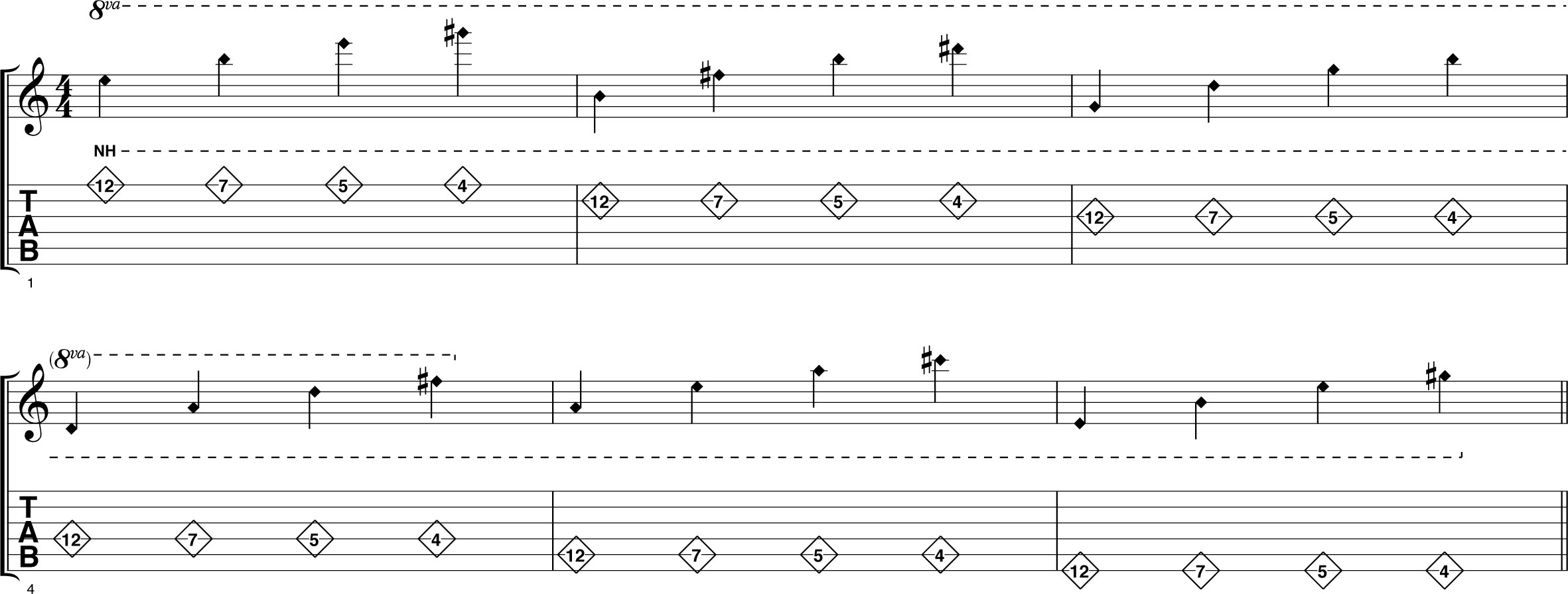How to play guitar pinched harmonics
Everything you need to scream...
Pinched harmonics are a fantastic way to get huge, screaming sounds, as used by the likes of Zakk Wylde and Dimebag Darrell.
The strongest 'natural' harmonic points on each open string are at the 4th, 5th, 7th and 12th frets. Simply touch an open string over one of these frets, pick the string, and a sweet harmonic should ring out.
These harmonics can in turn be shifted along the strings when you fret a note. For example, play a 2nd-fret note and the strong harmonics will be two frets higher, at the 6th, 7th, 9th and 14th frets. These are known as 'artificial' harmonics.
Pinched harmonics use the same principle, ie, reproducing harmonics higher up the strings, but by simultaneously touching a harmonic with your thumb as you pick the string.
You'll need to keep the point of your pick level with the edge of your thumb. Start by targeting harmonics 24 frets higher than any note you fret, then work through the tab.
Main natural harmonics

These are the key natural harmonics on each open string. Simply place your finger over the relevant fret (not behind it), then pick the string.
These frets are mirrored in different octaves all over each string, not just in the lowest 12-fret octave. Get used to the positioning, as you'll be using the same idea with your pick hand.
Want all the hottest music and gear news, reviews, deals, features and more, direct to your inbox? Sign up here.
Main natural harmonics tab (right-click to download)
Tapped harmonic exercise

The idea here is to fret a fourth-string, 5th-fret G note, then tap the string on the frets shown (17th, 12th, etc).
Notice how the harmonics are four, five, seven and 12 frets higher than the fretted note. This can easily be moved to any string. And, if you change fret position, your pick-hand tap will also have to move.
Tapped harmonic exercise tab (right-click to download)
Finding virtual frets

On most guitars, beyond the 22nd fret we run out of frets and thus visual reference points for our harmonics.
Bars 1 and 2 will help you develop a feel for the location of these 'virtual' frets. In bars 3 and 4, fret a 7th-fret A note and target your pick at the relevant virtual fret to play a pinched harmonic.
Although these harmonics are two or three octaves up, they are still targeting the equivalent of four, five, seven and 12 frets above the fretted note.
Finding virtual frets tab (right-click to download)
Pinched harmonics and the minor pentatonic scale

This exercise is great for developing a feel for where to position your pick in a minor pentatonic pinched harmonic lick.
Essentially, your pick positions mimic the 'shape' of the scale played by the fret hand but 24 frets higher up the fretboard (eg, play a pinched harmonic at the 31st fret when playing a 7th-fret note).
Pinched harmonics and the minor pentatonic scale tab (right-click to download)
Zakk Wylde-style wide vibrato

For extreme Zakk Wylde- or Dimebag-style metal harmonics, wide vibrato and plenty of distortion is essential.
This example hits the major 3rd pinched harmonic (a whole 28 frets higher than the fretted note), which sounds great when you really dig in and play aggressive vibrato or bends.
Zakk Wylde-style wide vibrato tab (right-click to download)
Total Guitar is Europe's best-selling guitar magazine.
Every month we feature interviews with the biggest names and hottest new acts in guitar land, plus Guest Lessons from the stars.
Finally, our Rocked & Rated section is the place to go for reviews, round-ups and help setting up your guitars and gear.
Subscribe: http://bit.ly/totalguitar
